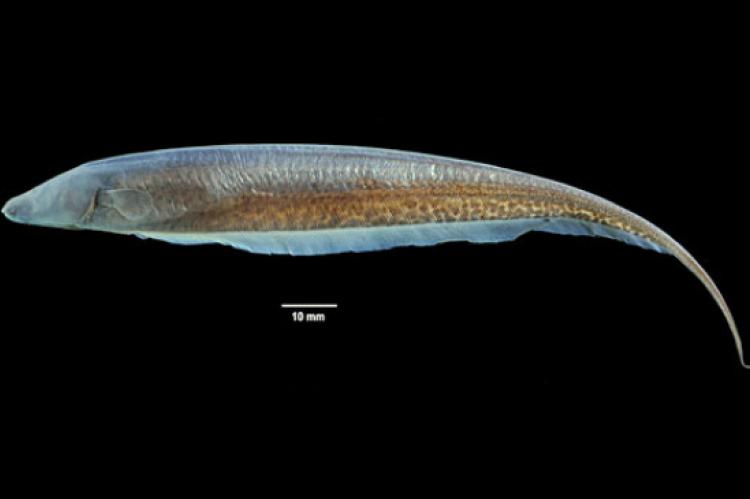New electric fish genus identified in South America
Eel-like Akawaio penak discovered in Guyana’s upper Mazaruni River
An international team research has identified a previously unknown electric fish genus in a remote region of South America. The Akawaio penak, a thin, eel-like electric fish, was discovered in the shallow, murky waters of the upper Mazaruni River in northern Guyana.
University of Toronto Scarborough (UTSC) professor Nathan Lovejoy and his team
analyzed tissue samples collected during a recent expedition led by Hernán López-Fernández of the Royal Ontario Museum. By sequencing its DNA and reconstructing an evolutionary tree, Lovejoy's team discovered the fish to be so distinct that it represents a new genus.
Largely unexplored due to its inaccessible location, the upper Mazaruni River is a biological diversity hotspot. The area is home to innumerable rivers atop a series of uplands isolated from the rest of South America for more than 30 million years.
"The fact this area is so remote and has been isolated for such a long time means you are quite likely to find new species," said Lovejoy. Like other electric knifefish, the Akawaio penak posseses a long organ running along its body that produces an electric field. Although too weak to stun prey, it is utilized to navigate, detect objects and communicate with other electric fish, an advantageous trait in its murky habitat.
The species is named after the Akawaio Amerindians that populate the upper Mazaruni. The region faces increasing habitat degradation due gold-mining in the area. "The Mazaruni contains many unique species that aren't found anywhere else in the world. It's an extremely important area in South America in terms of biodiversity," added Lovejoy. Results of the discovery are published in the recent edition of the journal Zoologica Scripta.


